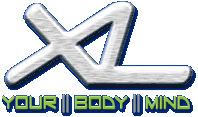

|
|
 |
|
home || about shawn || massage therapy || coaching || related links || contact |
The Use Of Massage In Sports Fluid and Food Replenishment This is a well established part of an athlete’s training regime. When an athlete pushes the muscle breakdown component of their program, without proper fluid and food replenishment to their muscles, they inhibit the function of these muscles. The importance of diet is sometimes challenged by forgetting or not eating properly, but this is usually the ‘wake up call’ needed to remind us to take care of our body. Of course, this is not the only thing we can do to maximize our training. Massage therapy has many benefits that will enable you to recover and train at higher level. Training, Rest and Recovery Sometimes an injury is our ‘wake up call’ that we haven’t been resting enough between our workouts. Other symptoms of overtraining can also be a warning that we’d better change something, or suffer the consequences. Signs of overtraining include muscle pain, joint pain, and tendon and bursa inflammation. Other indicators may be restlessness, irritability, and difficulty in sleeping. Hopefully, we are able to pick up on these symptoms of overtraining and act on them to change the situation you’ve pushed your body into, before you suffer an injury. When the musculoskeletal system is being overtrained in this way it becomes vulnerable to trauma. While following a seemingly normal training schedule one could suffer acute conditions like severe muscle strains, joint sprains and stress fractures. These in fact seldom happen by accident and can be avoided with a more comprehensive approach to recovery. One must have enough rest time to allow the systems of the body to recover fully between training sessions. With only twenty-four hours in a day, and the increased training demands, full recovery may not be possible unless the effectiveness of the rest periods is improved. The importance of cooling down and stretching is well understood and should be an integral part of a training program. In spite of doing these exercises properly, however, there may still be local muscle tension preventing full recovery. Stretching tends to work the muscle groups as a whole, but the muscle down not work as a single unit this way. It is divided into many sub-compartments each of which work with different effort to produce the complexity of movement required. Also the normal range of motion in some joints restricts the effectiveness of stretching. As training increases, rest alone will not be enough to maintain the injury-free balance. Therefore, a cool down and stretching regime must be added. All sporting activities involve muscle action as the primary motive force, and many sorts injuries are direct muscle injuries or originate from muscle dysfunction. Massage is the best form of treatment for muscle tension, and has the distinct advantage over most other therapies in that it can be used on a regular basis to help prevent overuse injuries as well as being used as a symptom based approach to the treatment of specific injuries. |
||||